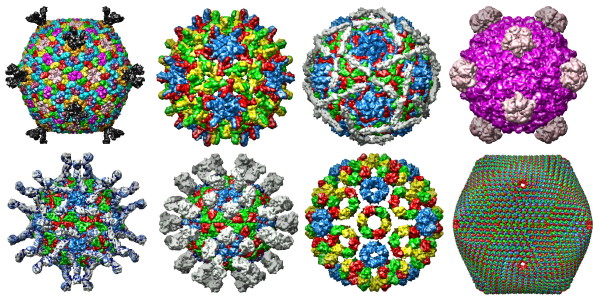
On an average, there are about 10 million viruses per liter of sea water or freshwater.
By Nazarul Islam
All of us are living in the ‘virosphere’. The world of viruses is dense and vast. Viruses are omnipotent, found in air, land, sea to every species. “An estimated 10 nonillion (10 to the 31st power) individual viruses exist on our planet ~ enough to assign one to every star in the universe 100 million times over,” writes National Geographic.
On an average, there are about 10 million viruses per liter of sea water or freshwater. If all viruses found in the oceans are arranged end-to-end, it will be the length of 10 million light years. As long as these viruses coevolve with us, they don’t become a nuisance.
This is what scientists call the ‘old friends’ hypothesis. The virus does not infect humans directly. But when we break the integrity of natural ecosystems, we create conditions that invite pandemics. A different animal is the intermediary. It is estimated that around 60 per cent of the world‘s diseases come from animals (zoonoses), 72 per cent of which come from wild animals.
The virus, as a complete parasite, is incapable of multiplying anywhere except inside a living cell. They lack independent metabolism. Once inside the host cell, the virus releases its genetic materials to hijack the host cell’s mechanism, and by usurping the host’s metabolic capacity, it swiftly produces a new generation of virions which go through the next cycle of reproduction. Mutation is like an error in creating new copies of the virus.
The new viruses then burst out of the host cell by a process called lysis, which kills the host cell. Most of the time the body’s immune system is capable enough to get rid of viruses. Problems arise when the virus cheats or attacks our immune system to gain access to a cell and takes control over it. All RNA viruses including Covid-19 [‘CO’ stands for corona, ‘VI’ for virus. ‘D’ for disease and ‘19’ for 2019] virus, have mutation rates up to a million times higher than their hosts. The high rates of mutation are corelated with enhanced virulence and evolvability. A virus usually prefers limiting itself to the population of a species.
The first human virus identified was the yellow fever virus. In 1881, Carlos Finlay, a Cuban physician, first conducted and published research work indicating that mosquitoes transmitted the disease as they were carrying yellow fever virus. Rodents, natural carriers of several viruses, become a part of immediate ecosystems of primitive tribes.
Somewhere during their frequent interaction with rodents, one pox virus crossed the species barrier and jumped to humans. It was a landmark event, but with lethal consequences. The pox virus caused smallpox, one of the deadliest viral infections.
Smallpox pandemic is estimated to have killed more than 300 million people since 1900. The other such notorious virus is HIV (human immunodeficiency virus) that causes acquired immunodeficiency syndrome (AIDS). HIV appears to have jumped to humans early in the 20th century from a type of chimpanzee in West Africa ~ most likely when humans hunted these animals for meat and came into contact with their infected blood.
The virus slowly spread across Africa and later to other parts of the world.
Till date, close to 39 million people worldwide have been infected with HIV; a total of 32 million have died since its outbreak. The 1918 influenza (Spanish Flu), the most severe pandemic, was believed to have been caused by an H1N1 virus with genes of avian origin.
It triggered a cytokine storm in which younger adults faced higher mortality rates. The number of deaths due to this pandemic (1918-1920) was estimated to be at least 50 million worldwide with about 675,000 occurring in the US.
The fourth pandemic, caused by the H1N1 virus, hit the world in 2009 and is known as the Swine Flu. It killed more than 300,000 people worldwide before morphing into a seasonal flu. In India, this pandemic killed 1,833 while affecting 36,240 at its peak in 2009-2010. It continues to infect and kill Indians.
All four pandemics in history as mentioned above have been caused by viruses, but Covid-19 is the first to be caused by a coronavirus. Since its outbreak, many ‘firsts’ associated with Covid-19 could explain why it is so devastating. This is the fastest that a disease became a pandemic within just 71 days of its outbreak.
In barely one year, it has infected over 67 million people and killed over 1.5 million in 200 countries and territories. Globally, most countries infected by the Covid-19 virus has had several million cases. Worst affected were the United States, India, United Kingdom, Brazil, Italy—making it the second worst-impacted country after the US. After first wave, the countries are currently reeling under the second wave.
By the end of the first wave, it was apparent that in this vast and diverse country, different states were at different stages of the pandemic, their state of preparedness, and their balance between lives and livelihood. Lockdown became the preventing medicine against the pandemic worldwide. The Great Lockdown helped contain the virus and save lives, but it has triggered mounting impacts on economy to health.
[author title=”Nazarul Islam ” image=”https://sindhcourier.com/wp-content/uploads/2021/05/Nazarul-Islam-2.png”]The Bengal-born writer Nazarul Islam is a senior educationist based in USA. He writes for Sindh Courier and the newspapers of Bangladesh, India and America. He is author of a recently published book ‘Chasing Hope’ – a compilation of his 119 articles.[/author]